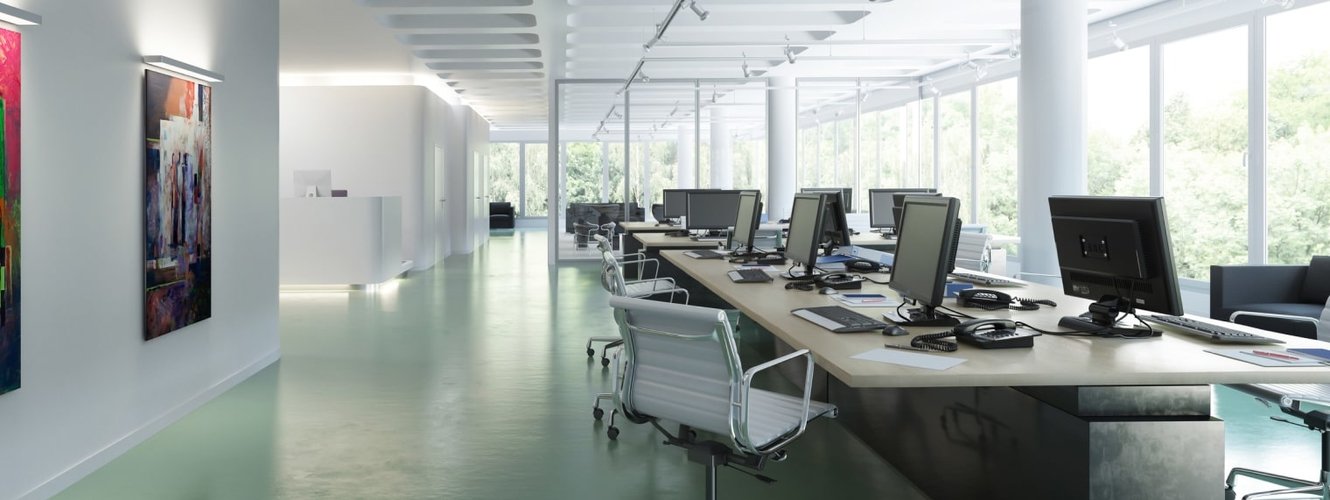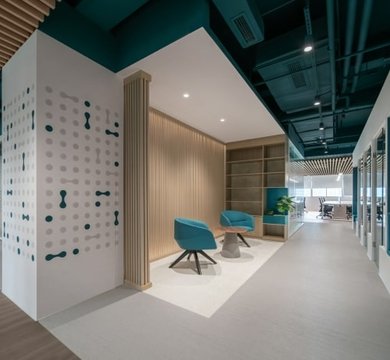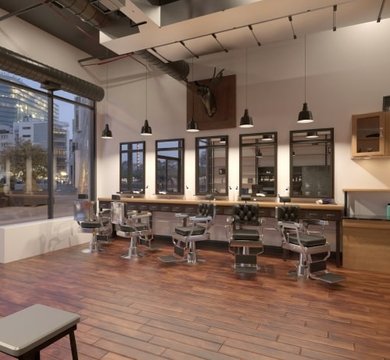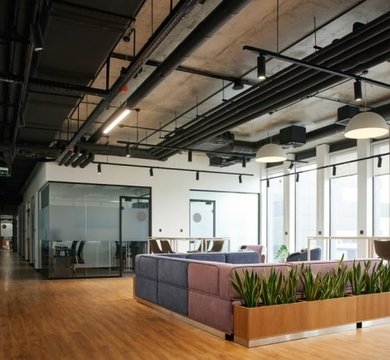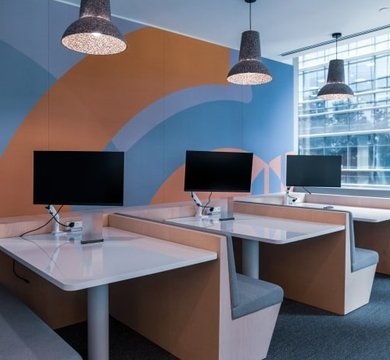You may be familiar with the term ‘blended families’ but have you heard of the blended workforce? The blended workforce meaning operates along the same principles, in it’s a collection of different people coming together.
In this article, MPL reveals the blended workforce advantages and disadvantages, discusses how you can prepare your business to welcome a blended workforce and offers advice on office designs that incorporate all types of professionals into more agile working practices.
Blended Workforce Definition
The most common blended workforce meaning is a company that’s made up of a variety of workers. This could refer to the hours people keep (full-time and part-time), employment status (employed, contracted, temporary, seasonal, zero hours and freelance) and the location of work (in the office, at home or remote multi-centre). A blended workforce may also be referred to as a flexible or hybrid workforce.
The uniting essence of a blended workforce is a collection of employees with different working patterns and employment terms, with a common belief that at least one quarter of the workforce needs to have a status other than full-time, permanent, to be considered a truly blended workforce.
Advantages of a Blended Workforce
If your current business model isn’t working, it may be time to discuss the blended workforce advantages and disadvantages. Encouragingly, the advantages are numerous and include:
Improved employee attraction & retention
When one or two companies in a sector start offering flexible working as a default, others have to follow suit or risk missing out on the best employees – especially as many professionals now view flexible working as their right, instead of a request. In addition, top talent will use their skills and experience when negotiating the type of employment that suits them most. A blended workforce also helps companies retain staff, easily facilitating the switch to remote working or contracting status, for instance.
Improved employee wellbeing
Research cited by CIPD shows that flexible working makes employees happier and healthier, with a blended workforce also resulting in higher levels of productivity too. In fact, the list of blended workforce advantages is long: higher levels of job satisfaction and commitment; increase in discretionary effort; reduced absenteeism; ability to manage disabilities and long-term health conditions; and better-supported mental health.
The ability to scale the workforce up or down
A workforce made up entirely of full-time, permanent workers is very fixed, with a lack of ability to flex in line with workloads and projects. An agile, blended workforce offers greater ability to grow or contract with ease. For example, making people redundant in difficult fiscal times can be costly and unpleasant, plus re-hiring when conditions change presents its own problems. A blended workforce comprising freelancers and temporary staff grants unrivalled flexibility, negating the need to fire people, and allowing teams to grow without commitment and fixed overheads.
The ability to hire specialist help only when required
Many businesses face situations where a project or set of particular conditions require specialist skills. It can, however, be hard to justify a full-time hire if the knowledge is only required on a short-term basis. A business set up to accommodate a blended workforce is agile enough to draft in a consultant or freelancer for a set period, knowing they’re only paying for the time they need.
The ability to cater for changing employee circumstances
The pandemic has taught us life can change literally overnight. It has also taught us that people can work remotely without a loss of output, and that flexible working actually suits some professionals better than full-time, permanent employment. A business that encourages a blended workforce will deal with employee requests more robustly. So when the accounts manager asks to work from home or the marketing assistant requests to swap to freelance status, the answer will be ‘yes’ and the employee will be retained (and most likely be more motivated).
What Needs To Be Considered When Managing A Blended Workforce?
If you’re considering incorporating more blended workforce elements into your business, there are a number of considerations that will ease the transition from a full-time, permanent workforce to a more flexible, hybrid one.
Employing a competent HR department
A blended workforce may mean less employed staff, and a higher turnover of freelancers and contractors. As well as an increased amount of recruitment, a HR department will need to be on point when it comes to contracts and employment law.
Managing human resources
Managers will need to plan ahead to ensure freelancers, temporary staff or consultants are drafted in for adequate days. If they don’t, they risk losing talent or being left with unfinished work because a contract has run out or a freelancer is moving on to another client.
Fair treatment of all staff
Businesses need to be aware of falling into the ‘out of sight, out of mind’ trap if their blended workforce is split across different locations. All staff, no matter where they work, should benefit from the same channels of communication, evaluations, safeguards, training plans and opportunities for promotion.
Developing multiple employee value propositions
A set of perks designed for the office-based, full time worker will not always suit the home-based professional, so for a blended workforce to feel equally valued, multiple employee value propositions should be developed. For example, an office based employee commuting to work may appreciate a travel card loan and an on-site gym, whereas a remote-working contractor may appreciate a free laptop upgrade and a contribution towards broadband costs.
Embracing digital communication
A blended workforce will probably be a decentralised one, with less opportunities for in-person meetings and off-the-cuff conversations. Businesses need to switch to app-based project management and adopt online chat platforms, while office refurbishments can improve video conferencing capabilities.
How To Ensure Your Employees Feel Connected If Using a Blended Model
Different time zones, different locations and different days of the week. It can be difficult to keep a blended workforce united but the perks of being part of a cohesive team can’t be ignored. Businesses can keep staff engaged using a number of strategies, and these include:-
- Regular off-site team building days or simply drinks in a central location
- Weekly video calls for each department and/or project team
- Scheduled ‘work in the office’ days, with lunch thrown in for free
- Ensuring ‘meet the team’ pages on websites feature everyone
- The provision of enough office desks and equipment, should freelancers or contractors decide to work in house
It’s highly likely that you’re already part of a blended workforce but getting the very best out of the dynamic requires specialist attention, new thought processes and a detailed approach to planning. Our office refurbishment and shop fit out solutions can help businesses adapt, especially when it comes to fluid office occupation. Contact the team for a commercial office or retail interior design consultation.

